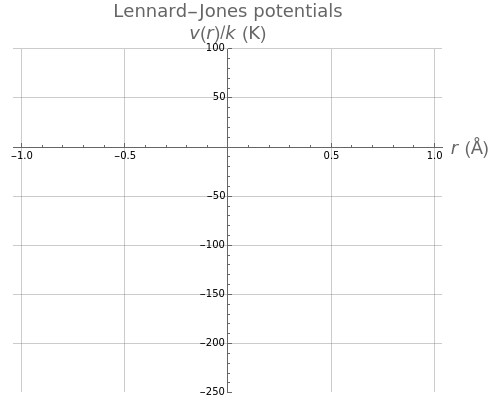Second Virial Coefficients Using the Lennard-Jones Potential
Second Virial Coefficients Using the Lennard-Jones Potential
The Lennard–Jones (L–J) 6-12 potential, , has been extensively employed for the computation of virial coefficients and transport properties of fluids. Here and are empirical parameters for each substance. The depth of the potential well is equal to , while the collision diameter is approximated by . The equilibrium intermolecular separation is then given by =σ. In the first part of this Demonstration, L–J potentials are plotted for a number of common gases.
v(r}=4ϵ-
12
σ
r
6
σ
r
ϵ
σ
-ϵ
σ
r
e
1/6
2
The equations of state for real gases can be represented by a virial expansion: , where is known as the second virial coefficient, , the third virial coefficient, and so on. For an ideal gas, of course, . The virial coefficients can be determined using classical statistical mechanics. In this Demonstration, we compute the second virial coefficient for an L–J gas using the relation . The light gases He and have significant quantum contributions and are not considered here. The temperature dependence of the second virial coefficient is shown in the second series of plots.
p=RT1+++⋯
V
m
B(T)
V
m
C(T)
2
V
m
B(T)
C(T)
B(T)=C(T)=⋯=0
B(T)=2π[1-]dr
N
A
∞
∫
0
2
r
-v{r}/kT
e
H
2
Several gases can be displayed at the same time by using the checkboxes on the left. Each curve can be identified using the tooltip.
